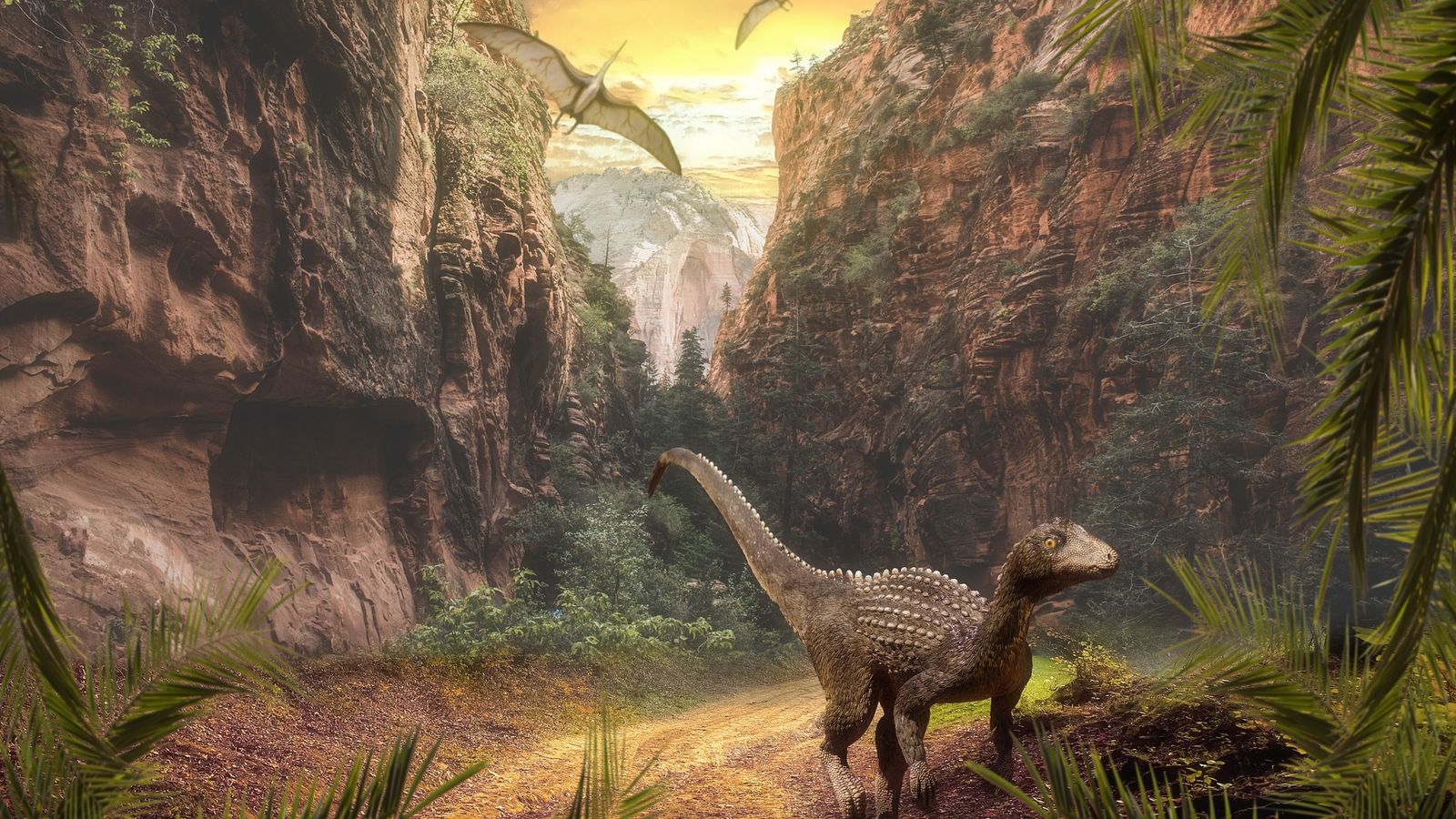A new study has revealed how the rise of dinosaurs more than 230 million years ago coincided with environmental changes driven by enormous volcanic eruptions.
Known as the Late Triassic Carnian Pluvial Episode (CPE), this interval of enormous climate change saw temperatures and humidity rise around the entirety of the Earth.
Before the CPE, the climate of the supercontinent Pangea is believed to have generally been arid, but during this period it became wet and ripe for life.
A team of researchers, including experts based at the University of Birmingham, analysed sediment and fossil plant records from a lake in northern China’s Jiyuan Basin.
They found these records showed a correlation between “pulses of volcanic activity with significant environmental changes”, including the “mega monsoon” climate of the CPE.
Their findings are published in the Proceedings of the National Academy of Sciences and detail four distinct episodes of volcanic activity, including major eruptions from the Wrangellia large igneous province.
Also known as the Wrangellia Terrane, after the Wrangell Mountains in Alaska, this fragment of tectonic crust is believed to have been the source for the enormous volcanism that changed the Earth’s climate around 230 million years ago.
The primary cause of this climate change was the introduction of enormous amounts of carbon dioxide into the atmosphere and ocean during this period.
The increased volume of CO2 in the atmosphere drove global warming and as such accelerated the hydrological cycle, meaning much more rain.
Professor Jason Hilton, co-author of the study and an expert in palaeobotany and palaeoenvironments at the University of Birmingham, explained the findings.
“Within the space of two million years the world’s animal and plant life underwent major changes including selective extinctions in the marine realm and diversification of plant and animal groups on land.
“These events coincide with a remarkable interval of intense rainfall known as the Carnian Pluvial Episode,” the professor said.
“Our research shows, in a detailed record from a lake in North China, that this period can actually be resolved into four distinct events, each one driven by discrete pulses of powerful volcanic activity associated with enormous releases of carbon dioxide into the atmosphere. These triggered an increase in global temperature and humidity.”
The evidence of major climatic changes was also found in Central Europe, East Greenland, Morocco, North America, and Argentina, and found that the increased rainfall of the CPE resulted in Pangea’s drainage basins converging into lakes and swamps rather than rivers or oceans.
“Our results show that large volcanic eruptions can occur in multiple, discrete pulses – demonstrating their powerful ability to alter the global carbon cycle, cause climate and hydrological disruption and drive evolutionary processes,” added co-author Dr Sarah Greene.
Dr Emma Dunne, a palaeobiologist at the University of Birmingham who was not involved in the study, commented: “This relatively long period of volcanic activity and environmental change would have had considerable consequences for animals on land.
“At this time, the dinosaurs had just begun to diversify, and it’s likely that without this event, they would never have reached their ecological dominance we see over the next 150 million years,” Dr Dunne said.
Professor Hilton added: “In addition to dinosaurs, this remarkable period in Earth history was also important for the rise of modern conifer groups and had a major impact on the evolution of terrestrial ecosystems and animal and plant life – including ferns, crocodiles, turtles, insects and the first mammals.”
